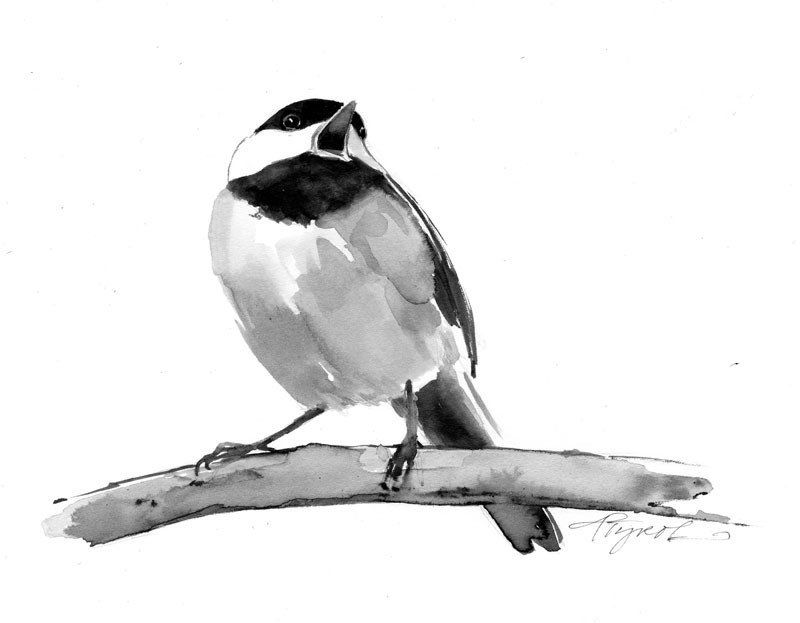
“Fee-beee.”
The chickadees that wintered near our house have added this familiar spring tune to their repertoire. The male birds are singing to proclaim territory and call amorously to their mates. While all “fee-beee” calls sound alike to humans, ornithologists believe the birds can distinguish individual voices and recognize who’s singing. Chickadees are inclined to mate for life, and they belong to flocks with social structures, so this kind of communication is essential. The “fee-beee” message is just one of approximately 15 calls in a chickadee vocabulary that ornithologists are working to decode.
The chickadees’ social structure is established in late fall when the birds flock in preparation to defend their expected winter-feeding territory. Flock sizes vary from six or eight birds to 14 or more in areas with plenty of bird feeders. At the top of the flock’s pecking order are the alpha male and female, which have successfully raised at least one brood. Below them in the social order are a beta couple, followed by other couples and then unmated juveniles. Once formed, this social order usually remains intact until the next fall.
Some chickadee calls relate to this pecking order. For example, the call that sounds approximately like “t-seedl-deet” is given by a bird higher in the order to warn off a lower-status bird. It would mean something like, “Buzz off!” or “This is MY food!” The chatter call, a rapid “chi-chi-chi-chi,” is given by the dominant bird, when it has driven off a subordinate, as if it were saying, “That’ll teach you!” A short “czeet” whistle may serve to keep other members of a flock together while a particular bird is foraging—as if it were saying, “Here I am.”
Other calls respond to danger. The high “zee” warns of a fast-approaching predator, while the familiar “chickadee-dee-dee” is used for a more stationary predator. Ornithologists have determined that the number of “dees” increases in proportion to the threat. Thus, a chickadee will deliver perhaps five “dees” when threatened by a large slow-moving predator bird, but as many as 23 “dees” when endangered by smaller, quick and agile birds. The “chickadee-dee” call is used by chickadees as they gang up to scold a predator.
Female chickadees utter a repeated “dee-dee-dee” to attract a mate during breeding season and to keep his attention focused. Females also listen attentively to singing contests between her mate and other males who might appear on the scene. Musical duels are significant to the female. If her spouse fares poorly, she may later decide to slip away, usually at early dawn, and mate with the other singer. After a tryst of perhaps 30 seconds, she will return as if nothing happened. These extramarital flings seem fairly common, and, in fact, they are helpful because they increase chances of fertilization. Sperm cells don’t survive long once inside the female body, so multiple copulations increase the likelihood of offspring. Indeed, DNA testing has confirmed that chicks in the nests of chickadees and many other bird species are often the offspring of more than one father.
Chickadee couples occasionally separate. Even birds like to climb the social ladder, it seems. If the alpha female dies, the beta female may desert her own mate and pair with the alpha male, thus gaining rank. The beta male then may pair with an unpaired female if one is available. If the alpha male dies, the beta male usually climbs rank to claim the alpha female. Any newfound social status offers immediate advantages, such as access to better forage and nest sites. Alpha males, who usually win the singing contests, also find opportunities to mess around out-of-‘wedlock,’ which benefits the species as a whole as the fittest males spread their genes more widely.
Whether such complex social behavior exists among other wild birds remains a matter of conjecture among ornithologists. But so far a wealth of information has been gathered on chickadees, and that’s largely because these birds are common and easy to observe.


Discussion *